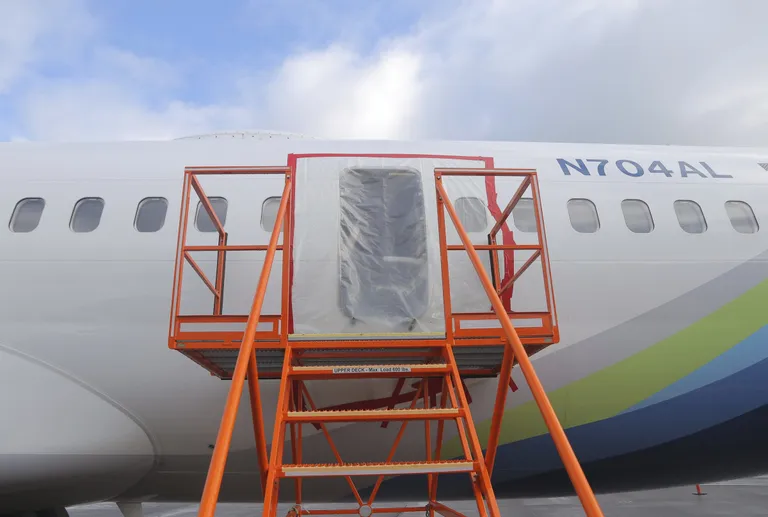Probes of the recent Boeing 737 MAX cabin blowout must expand far beyond safety practices and manufacturing controls. Investigators should scrutinize persistent company failures over the past four decades to become more transparent and law-abiding.
Before this month’s cabin blowout on an Alaska Airlines 737 MAX 9 jet — which ripped the shirt off a teenage boy, damaged rows of seats near the door-sized hole and tore off part of the captain’s headset — Boeing already was reeling from a series of manufacturing flaws. Jetliner problems included improperly drilled holes, defective parts and potentially loose bolts in rudder-control systems.
Since the early 1980s, Boeing has been punished for an equally long list of ethical and criminal transgressions. They ranged from illegally snaring restricted Pentagon planning documents to stealing a rival’s rocket development plans.
After each legal stumble, Boeing had a strikingly similar response. Practically every public mea culpa by a top company executive, whether just a few months or several years apart, eventually was followed by another serious violation and even more fervent pledges to reform.
I covered Boeing for The Wall Street Journal from the 1980s through 2021. The pattern suggests to me that both production and legal woes stem from similar flaws in corporate culture. Instead of ensuring that promised internal changes were fully embraced and demonstrated through performance, the company historically behaved as though slogans, public relations efforts and bureaucratic shuffles were adequate in fixing the problems.
As a result, Boeing’s leaders didn’t fully embrace lessons learned from previous blunders. At this point, regulators, lawmakers and passengers should question what in Boeing’s corporate DNA has mired it in severe quality-control and legal troubles. (Two crashes of a smaller 737 MAX model that claimed a total of 346 lives weren’t related to production defects.)
High-profile legal violations over the years included:





Boeing has declined comment about specifics of corporate culture.
But since David Calhoun became Boeing’s chief executive four years ago, almost every quarter he’s predicted a swift resurgence of the company’s reputation and finances. In addition to commercial aircraft, Boeing is losing money on big-ticket programs such as assembling space capsules, building a new Air Force One and turning out Pentagon refueling aircraft.
Like clockwork, unexpected production snafus, safety lapses and financial setbacks have undercut Calhoun’s promised turnaround.
With less notice and without admitting liability, in September Boeing paid $8.1 million to settle unrelated civil claims that it systematically violated manufacturing testing requirements on the Navy’s V-22 aircraft.
Responding to the Alaska accident, Calhoun stressed the importance of “acknowledging our mistake” and vowing “complete transparency every step of the way.” He also told Boeing employees it’s essential to rebuild trust among airline executives. “They have confidence in all of us — they do — and they will again.”
Such comments carry remarkable echoes from the past. Reporting Boeing’s fifth consecutive quarterly loss last October, Calhoun asserted a more transparent culture was succeeding in identifying assembly-line deficiencies. “We now have the rigor to find and fix [them] once and for all,” he said. To assure safety, he stressed that all 737 MAX fuselages had “been gone over with a microscope.” None of the recent assembly-line lapses have been tied to criminal behavior.
Some 17 years earlier, then-Chairman and CEO James McNerney apologized for blatant unethical behavior that cost Boeing $615 million and made it the poster child for Pentagon corruption. He reassured lawmakers Boeing was determined to incorporate strict ethics rules “into the fabric” of the company.
Considering decades of broken promises, it’s unrealistic and naive to believe Boeing finally found the path to correct both production and ethical lapses.
